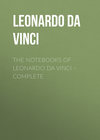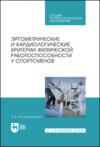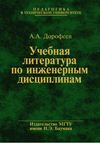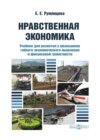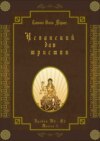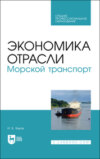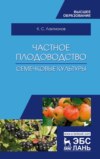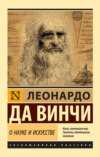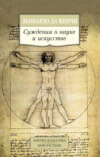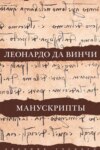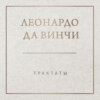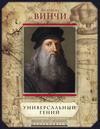Читать книгу: «The Notebooks of Leonardo Da Vinci. Complete», страница 58
1352
I was so greatly rejoiced, most Illustrious Lord, by the wished for recovery of your health, that my own ills have almost left me; and I say God be praised for it. But it vexes me greatly that I have not been able completely to satisfy your Excellency's wishes by reason of the wickedness of that German deceiver, for whom I left nothing undone by which I could hope to please him; and secondly I invited him to lodge and board with me, by which means I should see constantly the work he was doing, for which purpose I would have a table fixed at the foot of one of these windows, where he could work with the file and finish the things made below; and so I should constantly see the work he might do, and it could be corrected with greater ease.
Draft of letter written at Rome.
1353
This other hindered me in anatomy, blaming it before the Pope; and likewise at the hospital; and he has filled [*4] this whole Belvedere with workshops for mirrors; and he did the same thing in Maestro Giorgio's room. He said that he had been promised [*7] eight ducats every month, beginning with the first day, when he set out, or at latest when he spoke with you; and that you agreed.
Seeing that he seldom stayed in the workshop, and that he ate a great deal, I sent him word that, if he liked I could deal with him separately for each thing that he might make, and would give him what we might agree to be a fair valuation. He took counsel with his neighbour and gave up his room, selling every thing, and went to find…
Miscellaneous Records (1354. 1355)-
1354
Dear Benedetto de' Pertarti. When the proud giant fell because of the bloody and miry state of the ground it was as though a mountain had fallen so that the country shook as with an earthquake, and terror fell on Pluto in hell. From the violence of the shock he lay as stunned on the level ground. Suddenly the people, seeing him as one killed by a thunderbolt, turned back; like ants running wildly over the body of the fallen oak, so these rushing over his ample limbs………. them with
*1354.[Footnote: A puzzling passage, meant, as it would seem, for a jest. Compare the description of Giants in Dante, Inf. XXI and XXII. Perhaps Leonardo had the Giant Antaeus in his mind. Of him the myth relates that he was a son of Ge, that he fed on lions; that he hunted in Libya and killed the inhabitants. He enjoyed the peculiarity of renewing his strength whenever he fell and came in contact with his mother earth; but that Hercules lifted him up and so conquered and strangled him. Lucan gives a full account of the struggle. Pharsalia IV, 617. The reading of this passage, which is very indistinctly written, is in many places doubtful.]
frequent wounds; by which, the giant being roused and feeling himself almost covered by the multitude, he suddenly perceives the smarting of the stabs, and sent forth a roar which sounded like a terrific clap of thunder; and placing his hands on the ground he raised his terrible face: and having lifted one hand to his head he found it full of men and rabble sticking to it like the minute creatures which not unfrequently are found there; wherefore with a shake of his head he sends the men flying through the air just as hail does when driven by the fury of the winds. Many of these men were found to be dead; stamping with his feet.
And clinging to his hair, and striving to hide in it, they behaved like sailors in a storm, who run up the ropes to lessen the force of the wind [by taking in sail].
News of things from the East.
Be it known to you that in the month of June there appeared a Giant, who came from the Lybian desert… mad with rage like ants…. struck down by the rude.
This great Giant was born in Mount Atlas and was a hero … and had to fight against the Egyptians and Arabs, Medes and Persians. He lived in the sea on whales, grampuses and ships.
Mars fearing for his life took refuge under the… of Jove.
And at the great fall it seemed as though the whole province quaked.
1355
This spirit returns to the brain whence it had departed, with a loud voice and with these words, it moved…
And if any man though he may have wisdom or goodness ………
[Footnote: This passage, very difficult to decipher, is on the reverse of a drawing at Windsor, Pl. CXXII, which possibly has some connection with it. The drawing is slightly reduced in this reproduction; the original being 25 cm. high by 19 cm. wide.]
O blessed and happy spirit whence comest thou? Well have I known this man, much against my will. This one is a receptacle of villainy; he is a perfect heap of the utmost ingratitude combined with every vice. But of what use is it to fatigue myself with vain words? Nothing is to be found in them but every form of sin … And if there should be found among them any that possesses any good, they will not be treated differently to myself by other men; and in fine, I come to the conclusion that it is bad if they are hostile, and worse if they are friendly.
Miscellaneous drafts of letters and personal records (1356—1368).
1356
All the ills that are or ever were, if they could be set to work by him, would not satisfy the desires of his iniquitous soul; and I could not in any length of time describe his nature to you, but I conclude…
1357
I know one who, having promised me much, less than my due, being disappointed of his presumptuous desires, has tried to deprive me of all my friends; and as he has found them wise and not pliable to his will, he has menaced me that, having found means of denouncing me, he would deprive me of my benefactors. Hence I have informed your Lordship of this, to the end [that this man who wishes to sow the usual scandals, may find no soil fit for sowing the thoughts and deeds of his evil nature] so that he, trying to make your Lordship, the instrument of his iniquitous and maliceous nature may be disappointed of his desire.
1358
And in this case I know that I shall make few enemies seeing that no one will believe what I can say of him; for they are but
[Footnote: Below this text we read gusstino—Giustino and in another passage on the same page Justin is quoted (No. 1210, 1. 48). The two have however no real connection.]
few whom his vices have disgusted, and he only dislikes those men whose natures are contrary to those vices. And many hate their fathers, and break off friendship with those who reprove their vices; and he will not permit any examples against them, nor any advice.
If you meet with any one who is virtuous do not drive him from you; do him honour, so that he may not have to flee from you and be reduced to hiding in hermitages, or caves or other solitary places to escape from your treachery; if there is such an one among you do him honour, for these are our Saints upon earth; these are they who deserve statues from us, and images; but remember that their images are not to be eaten by you, as is still done in some parts of India [Footnote 15: In explanation of this passage I have received the following communication from Dr. G. W. LEITNER of Lahore: "So far as Indian customs are known to us, this practice spoken of by Leonardo as 'still existing in some parts of India' is perfectly unknown; and it is equally opposed to the spirit of Hinduism, Mohammedanism and Sikhism. In central Thibet the ashes of the dead, when burnt, are mixed with dough, and small figures—usually of Buddha—are stamped out of them and some are laid in the grave while others are distributed among the relations. The custom spoken of by Leonardo may have prevailed there but I never heard of it." Possibly Leonardo refers here to customs of nations of America.] where, when the images have according to them, performed some miracle, the priests cut them in pieces, being of wood, and give them to all the people of the country, not without payment; and each one grates his portion very fine, and puts it upon the first food he eats; and thus believes that by faith he has eaten his saint who then preserves him from all perils. What do you think here, Man, of your own species? Are you so wise as you believe yourselves to be? Are these things to be done by men?
1359
As I told you in past days, you know that I am without any….
Francesco d'Antonio. Bernardo di Maestro Jacopo.
1360
Tell me how the things happened.
1361
j lorezo\\\ 2 inbiadali\\\ 3 inferri de\\\ 4in lorezo\\\ 5[inno abuil]\\ 6 in acocatu\\\ 7 per la sella\\\ 8colte di lor\\\ 9v cavallott\\\ I0el uiagg\\\ IIal\\\ I2a lurez\\\ 13in biada\\\ 14inferri\\\ 15abuss\\\ 16in viagg\\\ 17alorz\\\ [Footnote: This seems to be the beginning of a letter, but only the first words of the lines have been preserved, the leaf being torn down the middle. No translation is possible.]
1362
And so may it please our great Author that I may demonstrate the nature of man and his customs, in the way I describe his figure. [Footnote: A preparatory note for the passage given as No. 798, *11. 41—42.]
1363
This writing distinctly about the kite seems to be my destiny, because among the first recollections of my infancy, it seemed to me that, as I was in my cradle, a kite came to me and opened my mouth with its tail, and struck me several times with its tail inside my lips. [Footnote: This note probably refers to the text No. 1221.]
C. A. 248a; 737a]
1364
[When I did well, as a boy you used to put me in prison. Now if I do it being grown up, you will do worse to me.]
1365
Tell me if anything was ever done.
1366
Tell me if ever I did a thing which me ….
1367
Do not reveal, if liberty is precious to you; my face is the prison of love. [Footnote:This note seems to be a quotation.]
1368
Maestro Leonardo of Florence. [Footnote: So Leonardo writes his name on a sheet with sundry short notes, evidently to try a pen. Compare the signature with those in Nos. 1341, 1348 and 1374 (see also No. 1346, l. 33). The form "Lionardo" does not occur in the autographs. The Portrait of the Master in the Royal Library at Turin, which is reproduced—slightly diminished—on Pl. I, has in the original two lines of writing underneath; one in red chalk of two or three words is partly effaced: lionardo it… lm (or lai?); the second written in pencil is as follows: fatto da lui stesso assai vecchio. In both of these the writing is very like the Master's, but is certainly only an imitation.]
Notes bearing Dates (1369—1378).
1369
The day of Santa Maria della Neve [of the Snows] August the 2nd 1473. [Footnote: *W. An. I. 1368. 1369. This date is on a drawing of a rocky landscape. See Chronique des Arts 1881 no. 23: Leonard de Vinci a-t-il ete au Righi le 5 aout 1473? letter by H. de Geymuller. The next following date in the MSS. is 1478 (see No. 663).
1370
On the 2nd of April 1489, book entitled 'Of the human figure'. [Footnote: While the letters in the MS. notes of 1473 and 1478 are very ornate, this note and the texts on anatomy on the same sheet (for instance No. 805) are in the same simple hand as we see on Pl. CXVI and CXIX. No 1370 is the only dated note of the years between 1480 and 1489, and the characters are in all essential points identical with those that we see in the latest manuscripts written in France (compare the facsimiles on Pl. CXV and p. 254), so that it is hardly possible to determine exactly the date of a manuscript from the style of the handwriting, if it does not betray the peculiarities of style as displayed in the few notes dated previous to l480.—Compare the facsimile of the manuscripts 1479 on Pl.LXII, No. 2; No. 664, note, Vol. I p. 346. This shows already a marked simplicity as compared with the calligraphy of I478.
The text No. 720 belongs to the year 1490; No. 1510 to the year 1492; No. 1459, No. 1384 and No. 1460 to the year 1493; No. 1463, No. 1517, No. 1024, 1025 and 1461 to the year 1494; Nos. 1523 and 1524 to the year 1497.
C. A. 103a; 325a]
1371
On the ist of August 1499, I wrote here of motion and of weight. [Footnote:1371. Scrissi qui. Leonardo does not say where; still we may assume that it was not in Milan. Amoretti writes, Memorie Storiche, chap. XIX: Sembra pertanto che non nel 1499 ma nel 1500, dopo il ritorno e la prigionia del duca, sia da qui partito Lionardo per andare a Firenze; ed e quindi probabile, che i mesi di governo nuovo e incerto abbia passati coll' amico suo Francesco Melzi a Vaprio, ove meglio che altrove studiar potea la natura, e soprattutta le acque, e l'Adda specialmente, che gia era stato l'ogetto delle sue idrostatiche ricerche. At that time Melzi was only six years of age. The next date is 1502; to this year belong No. 1034, 1040, 1042, 1048 and 1053. The note No. 1525 belongs to the year 1503.]
1372
On the 9th of July 1504, Wednesday, at seven o'clock, died Ser Piero da Vinci, notary at the Palazzo del Podest*a, my father, —at seven o'clock, being eighty years old, leaving behind ten sons and two daughters.
[Footnote: This statement of Ser Piero's age contradicts that of the Riassunto della portata di Antonio da Vinci (Leonardo's grandfather), who speaks of Ser Piero as being thirty years old in 1457; and that of the Riassunto della portata di Ser Piero e Francesco, sons of Antonia da Vinci, where Ser Piero is mentioned as being forty in 1469. These documents were published by G. UZIELLI, Ricerche intorno a L. da Vinci, Firenze, 1872, pp. 144 and 146. Leonardo was, as is well known, a natural son. His mother 'La Catarina' was married in 1457 to Acchattabriga di Piero del Vaccha da Vinci. She died in 1519. Leonardo never mentions her in the Manuscripts. In the year of Leonardo's birth Ser Piero married Albiera di Giovanni Amadoci, and after her death at the age of thirty eight he again married, Francesca, daughter of Ser Giovanni Lanfredi, then only fifteen. Their children were Leonardo's halfbrothers, Antonio (b. 1476), Ser Giuliano (b. 1479), Lorenzo (b. 1484), a girl, Violante (b. 1485), and another boy Domenico (b. 1486); Domenico's descendants still exist as a family. Ser Piero married for the third time Lucrezia di Guglielmo Cortigiani by whom he had six children: Margherita (b. 1491), Benedetto (b. 1492), Pandolfo (b. 1494), Guglielmo (b. 1496), Bartolommeo (b. 1497), and Giovanni) date of birth unknown). Pierino da Vinci the sculptor (about 1520-1554) was the son of Bartolommeo, the fifth of these children. The dates of their deaths are not known, but we may infer from the above passage that they were all still living in 1505.]
1373
On Wednesday at seven o'clock died Ser Piero da Vinci on the 9th of July 1504.
[Footnote: This and the previous text it may be remarked are the only mention made by Leonardo of his father; Nos. 1526, 1527 and No. 1463 are of the year 1504.]
1374
Begun by me, Leonardo da Vinci, on the l2th of July 1505.
[Footnote: Thus he writes on the first page of the MS. The title is on the foregoing coversheet as follows: Libro titolato disstrafformatione coe (cio*e) d'un corpo nvn (in un) altro sanza diminuitione e acresscemento di materia.]
1375
Begun at Milan on the l2th of September 1508.
[Footnote: No. 1528 and No. 1529 belong to the same year. The text Vol. I, No. 4 belongs to the following year 1509 (1508 old style); so also does No. 1009.– Nos. 1022, 1057 and 1464 belong to 1511.]
1376
On the 9th of January 1513.
[Footnote: No. 1465 belongs to the same year. No. 1065 has the next date 1514.]
1377
The Magnifico Giuliano de' Medici left Rome on the 9th of January 1515, just at daybreak, to take a wife in Savoy; and on the same day fell the death of the king of France.
[Footnote: Giuliano de Medici, brother to Pope Leo X.; see note to Nos. 1351-1353. In February, 1515, he was married to Filiberta, daughter of Filippo, Duke of Savoy, and aunt to Francis I, Louis XII's successor on the throne of France. Louis XII died on Jan. 1st, and not on Jan. 9th as is here stated.– This addition is written in paler ink and evidently at a later date.]
1378
On the 24th of June, St John's day, 1518 at Amboise, in the palace of…
[Footnote: Castello del clli. The meaning of this word is obscure; it is perhaps not written at full length.]
XXII.
Miscellaneous Notes
The incidental memoranda scattered here and there throughout the MSS. can have been for the most part intelligible to the writer only; in many cases their meaning and connection are all the more obscure because we are in ignorance about the persons with whom Leonardo used to converse nor can we say what part he may have played in the various events of his time. Vasari and other early biographers give us a very superficial and far from accurate picture of Leonardo's private life. Though his own memoranda, referring for the most part to incidents of no permanent interest, do not go far towards supplying this deficiency, they are nevertheless of some importance and interest as helping us to solve the numerous mysteries in which the history of Leonardo's long life remains involved. We may at any rate assume, from Leonardo's having committed to paper notes on more or less trivial matters on his pupils, on his house-keeping, on various known and unknown personages, and a hundred other trifies—that at the time they must have been in some way important to him.
I have endeavoured to make these 'Miscellaneous Notes' as complete as possible, for in many cases an incidental memorandum will help to explain the meaning of some other note of a similar kind. The first portion of these notes (Nos. l379—l457), as well as those referring to his pupils and to other artists and artificers who lived in his house (1458—1468,) are arranged in chronological order. A considerable proportion of these notes belong to the period between 1490 and 1500, when Leonardo was living at Milan under the patronage of Lodovico il Moro, a time concerning which we have otherwise only very scanty information. If Leonardo did really—as has always been supposed,—spend also the greater part of the preceding decade in Milan, it seems hardly likely that we should not find a single note indicative of the fact, or referring to any event of that period, on the numerous loose leaves in his writing that exist. Leonardo's life in Milan between 1489 and 1500 must have been comparatively uneventful. The MSS. and memoranda of those years seem to prove that it was a tranquil period of intellectual and artistic labour rather than of bustling court life. Whatever may have been the fate of the MSS. and note books of the foregoing years—whether they were destroyed by Leonardo himself or have been lost—it is certainly strange that nothing whatever exists to inform us as to his life and doings in Milan earlier than the consecutive series of manuscripts which begin in the year 1489.
There is nothing surprising in the fact that the notes regarding his pupils are few and meagre. Excepting for the record of money transactions only very exceptional circumstances would have prompted him to make any written observations on the persons with whom he was in daily intercourse, among whom, of course, were his pupils. Of them all none is so frequently mentioned as Salai, but the character of the notes does not—as it seems to me—justify us in supposing that he was any thing more than a sort of factotum of Leonardo's (see 1519, note).
Leonardo's quotations from books and his lists of titles supply nothing more than a hint as to his occasional literary studies or recreations. It was evidently no part of his ambition to be deeply read (see Nrs. 10, 11, 1159) and he more than once expressly states (in various passages which will be found in the foregoing sections) that he did not recognise the authority of the Ancients, on scientific questions, which in his day was held paramount. Archimedes is the sole exception, and Leonardo frankly owns his admiration for the illustrious Greek to whose genius his own was so much akin (see No. 1476). All his notes on various authors, excepting those which have already been inserted in the previous section, have been arranged alphabetically for the sake of convenience (1469—1508).
The passages next in order contain accounts and inventories principally of household property. The publication of these—often very trivial entries—is only justifiable as proving that the wealth, the splendid mode of life and lavish expenditure which have been attributed to Leonardo are altogether mythical; unless we put forward the very improbable hypothesis that these notes as to money in hand, outlay and receipts, refer throughout to an exceptional state of his affairs, viz. when he was short of money.
The memoranda collected at the end (No. 1505—1565) are, in the original, in the usual writing, from left to right. Besides, the style of the handwriting is at variance with what we should expect it to be, if really Leonardo himself had written these notes. Most of them are to be found in juxtaposition with undoubtedly authentic writing of his. But this may be easily explained, if we take into account the fact, that Leonardo frequently wrote on loose sheets. He may therefore have occasionally used paper on which others had made short memoranda, for the most part as it would seem, for his use. At the end of all I have given Leonardo's will from the copy of it preserved in the Melzi Library. It has already been printed by Amoretti and by Uzielli. It is not known what has become of the original document.
Memoranda before 1500 (1379-l413).
Покупайте книги и получайте бонусы в Литрес, Читай-городе и Буквоеде.
Участвовать в бонусной программе
